The Jackson 5 discography, later known simply as The Jacksons, stand as one of the most iconic family bands in music history. Originating from Gary, Indiana, this group of brothers not only captured the hearts of millions worldwide but also left an indelible mark on the landscape of popular music. Their journey began in the late 1960s, when brothers Jackie, Tito, Jermaine, Marlon, and Michael formed the initial lineup. Their early music career started as The Jackson Brothers before evolving into the quintet known as The Jackson 5.
Their rise to fame was meteoric, fueled by their extraordinary musical talent and charismatic performances. Under the management of Motown Records, they released their first album, “Diana Ross Presents The Jackson 5” in 1969, which catapulted them into the spotlight. The combination of infectious melodies and polished choreography led to a series of successful hits, making them a significant act in the era’s music scene.
The Jackson 5’s significance extends beyond their musical achievements. They played a crucial role during a transformative era in American music, breaking racial barriers in the industry and setting new standards for artist success. The band’s appeal was universal, bridging generational and racial divides with their music and influencing numerous artists across various genres.
In 1975, a significant shift occurred when the youngest brother, Randy, replaced Jermaine, marking their transition from Motown to Epic Records and a rebranding as The Jacksons. This new chapter allowed for more creative control and mature sound evolution. Jermaine rejoined the group in 1983, enhancing the band’s dynamic until Michael and Marlon embarked on solo careers in 1989.
The legacy of The Jackson 5 endures, reflected in their timeless tracks and the ongoing influence they have on the music industry. Their story is not just one of musical success but of a family whose bonds were tested and strengthened in the fierce light of global stardom.
| Aspect | Details |
|---|---|
| Origin | Gary, Indiana |
| Initial Lineup | Jackie, Tito, Jermaine, Marlon, and Michael |
| Early Career | Started as The Jackson Brothers, evolved into The Jackson 5 |
| First Album | “Diana Ross Presents The Jackson 5” (1969) |
| Significance | Broke racial barriers, set new standards for artist success, influenced various artists across genres |
| Major Transition | 1975, Randy replaces Jermaine, move from Motown to Epic Records, rebranded as The Jacksons |
| Legacy | Enduring influence on the music industry, a story of musical success and familial bonds |
Contents
Formation and Evolution of The Jackson 5
The origins of The Jackson 5 trace back to the early 1960s in Gary, Indiana, where the seeds of the group were planted by three of the Jackson brothers: Jackie, Tito, and Jermaine. Initially performing as The Jackson Brothers, the trio focused on a blend of soulful harmonies and basic rhythm and blues. The brothers practiced rigorously under the watchful and strict guidance of their father, Joseph Jackson, who quickly recognized their potential to become a professional music group.
As the brothers honed their skills, the addition of younger siblings Marlon and Michael transformed the ensemble into The Jackson 5. Michael, even as a young boy, showed extraordinary vocal talent and stage presence, which soon made him the lead singer of the group. The Jackson 5’s dynamic performances and polished routines led them to win a major talent show at the famous Apollo Theater in Harlem, New York, which proved to be a turning point in their career. This victory helped them gain the attention of Motown Records, with whom they signed in 1969.
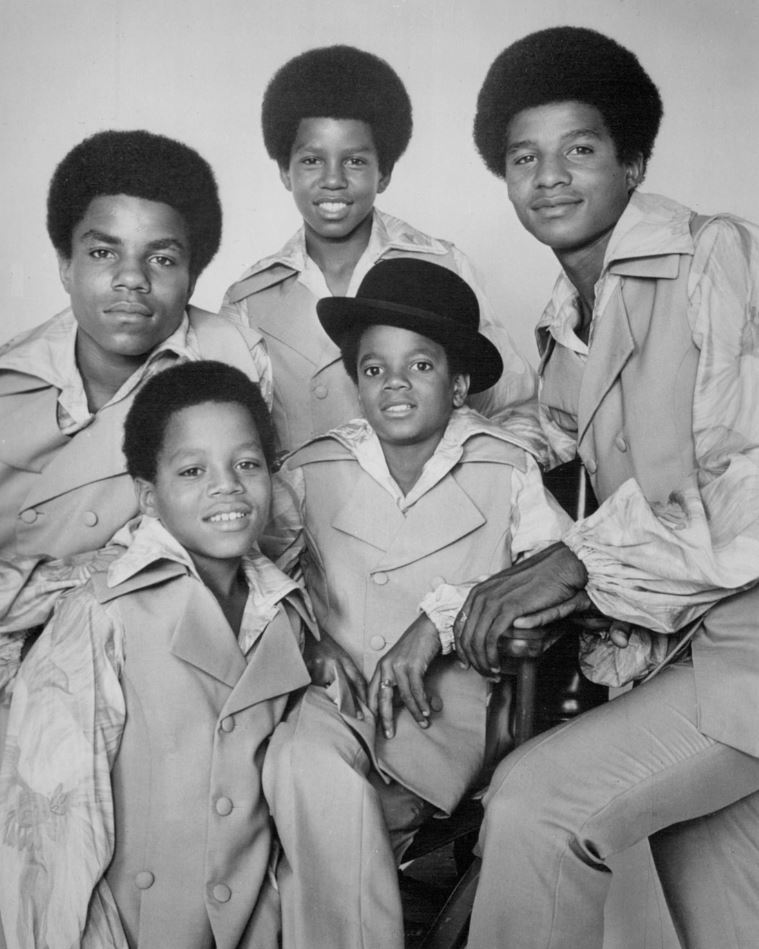
The group underwent its first major change in 1975 when they moved from Motown to Epic Records, prompting a name change to The Jacksons due to legal reasons. This move was also marked by the departure of Jermaine, who chose to stay with Motown, and the introduction of the youngest Jackson brother, Randy, into the band. Jermaine’s departure was significant but did not halt the group’s momentum. In 1983, in a twist of fate, Jermaine rejoined the group, reuniting all the original members except for Michael and Marlon.
By the late 1980s, both Marlon and Michael decided to leave The Jacksons to pursue solo careers. Michael, in particular, had already achieved astronomical success with his solo albums, especially with the release of “Thriller” in 1982, which became the best-selling album of all time. Marlon’s departure marked a quieter transition, focusing more on his personal life and other business ventures. The departures marked a significant reshaping of the group’s dynamic and musical output, signaling the end of an era for The Jacksons as a complete family musical act.
| Aspect | Details |
|---|---|
| Early Formation | Started in the early 1960s in Gary, Indiana as The Jackson Brothers with Jackie, Tito, and Jermaine. |
| Transition to The Jackson 5 | Addition of Marlon and Michael; Michael became the lead singer due to his exceptional talent. |
| Significant Achievement | Won a talent show at the Apollo Theater, leading to their signing with Motown Records in 1969. |
| Major Change in 1975 | Moved from Motown to Epic Records; rebranded as The Jacksons; Jermaine stayed with Motown, Randy joined. |
| Jermaine’s Reunion | Rejoined in 1983, reuniting all original members except Michael and Marlon. |
| Late 1980s Changes | Michael and Marlon left to pursue solo careers; Michael’s solo album “Thriller” became the best-selling album. |
| Group Dynamics | The departures marked a new phase, reshaping the group’s dynamic and musical output. |
Achievements
The Jackson 5’s impact on the music charts is undeniable. Throughout their career, they managed to place 18 singles in the US Billboard Top 20. This remarkable achievement highlights not only their popularity but also their ability to consistently produce hits that resonated with a wide audience. Their chart success is a testament to their appeal across diverse demographic groups, cementing their place in music history.
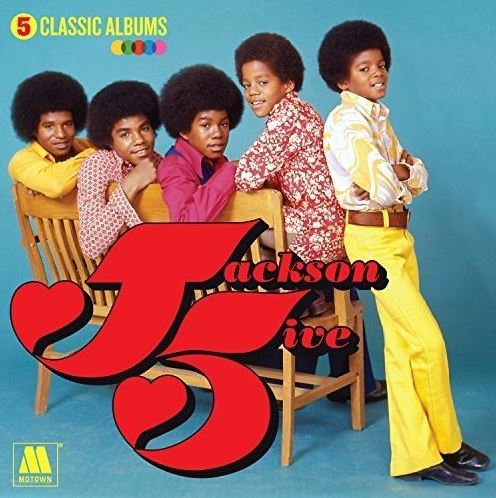
Among their numerous chart-topping hits, four singles reached number one on the Billboard charts, each becoming iconic tracks that defined their musical era. “I Want You Back,” released in 1969, was their first number one hit and is still celebrated today for its infectious melody and Michael’s precocious vocal performance. Following closely were “ABC,” “The Love You Save,” and “I’ll Be There,” all released between 1970 and 1971. These songs not only solidified their status as pop sensations but also showcased their unique blend of soul, pop, and funk elements. “I’ll Be There” remains one of the best-selling singles of all time from Motown, illustrating the timeless appeal of their music and the profound emotional connection it fostered with listeners worldwide.
Through their dynamic performances and a knack for catchy, soul-stirring music, The Jackson 5 left an indelible mark on the world of pop music, influencing generations of artists and music enthusiasts alike. Their evolution from a local family band to international superstars is a testament to their talent, perseverance, and the innovative spirit that they brought to the music industry.
| Aspect | Details |
|---|---|
| Chart Success | Placed 18 singles in the US Billboard Top 20. |
| Number One Hits | Four singles reached number one: “I Want You Back” (1969), “ABC”, “The Love You Save”, and “I’ll Be There” (all between 1970-1971). |
| Significance of Hits | “I’ll Be There” is one of Motown’s best-selling singles; all number one hits showcase a blend of soul, pop, and funk. |
| Legacy | Influenced generations of artists and music enthusiasts; evolved from a local family band to international superstars. |
Studio Albums
The Jackson 5 released a series of albums that captured the essence of pop and soul music, each contributing uniquely to their legendary status.
Diana Ross Presents The Jackson 5 (1969): This debut album introduced The Jackson 5 to the world, peaking at number 5 in the US. It featured hits like “I Want You Back,” which helped solidify their place in music history.
ABC (1970): Their second studio album reached number 4 in the US and included iconic tracks such as “ABC” and “The Love You Save,” both of which topped the charts.
Third Album (1970): Continuing their success, this album also peaked at number 4 in the US, featuring the number one hit “I’ll Be There,” which became one of their most enduring songs.
Jackson 5 Christmas Album (1970): This holiday album reached number 36 in the US and included festive hits like “Santa Claus Is Coming to Town” and “I Saw Mommy Kissing Santa Claus.”
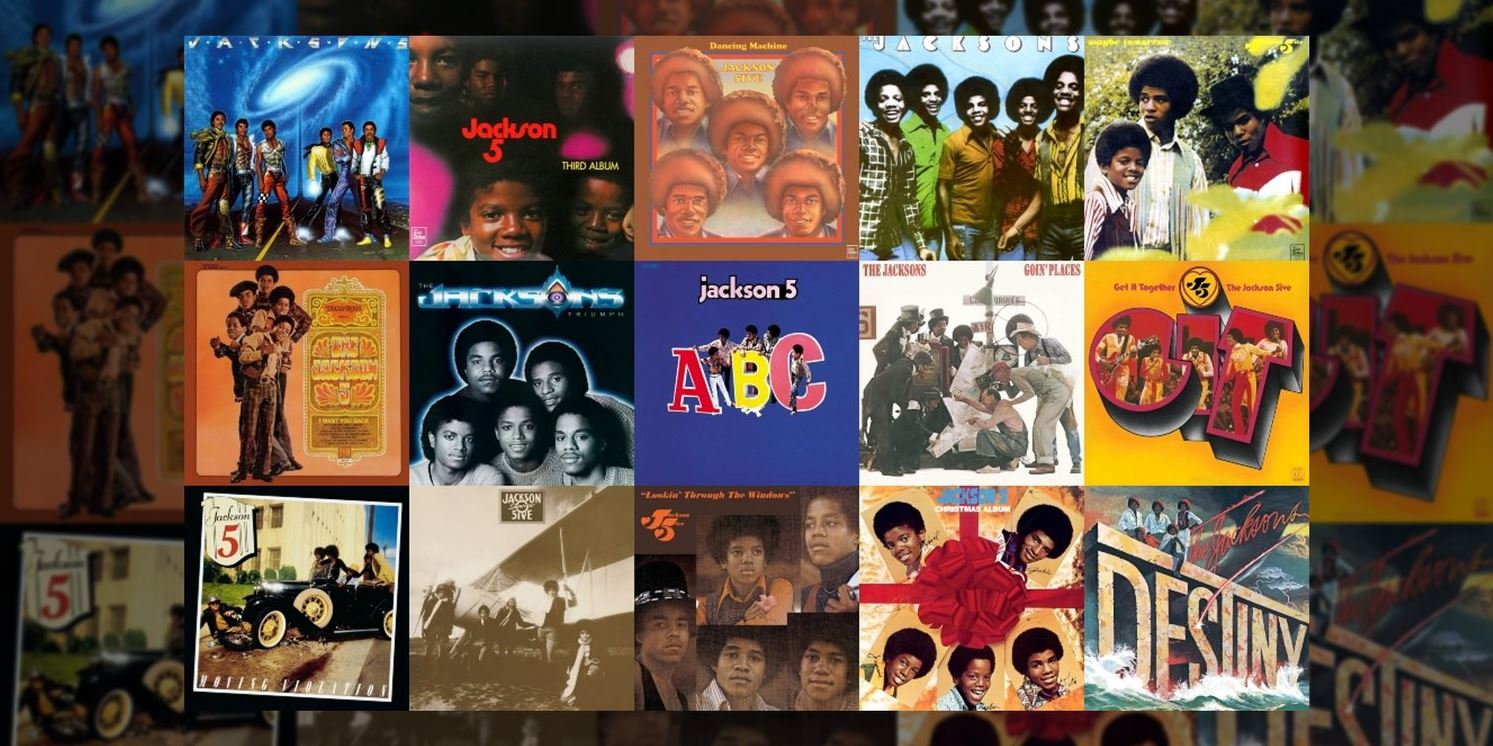
Maybe Tomorrow (1971): Peaking at number 11 in the US, this album featured “Never Can Say Goodbye,” a top 5 hit that showcased a more mature sound from the group.
Lookin’ Through the Windows (1972): The album climbed to number 7 in the US, with the title track also achieving success as a single.
Skywriter (1973): Despite lower visibility in the US, peaking at number 44, it included tracks that enjoyed moderate success internationally.
G.I.T.: Get It Together (1973): This album represented a shift in their musical style but did not chart as high, reaching number 100 in the US.
Dancing Machine (1974): A resurgence in popularity, this album peaked at number 16 in the US, driven by the success of its title track, which became a disco favorite.
Moving Violation (1975): Their last album with Motown, peaking at number 36 in the US, featured a blend of disco and soul influences.
After moving to Epic Records and renaming themselves The Jacksons, they continued their success with a series of albums that allowed more creative freedom and exploration.
The Jacksons (1976): This album marked their debut on Epic Records and included hits like “Enjoy Yourself,” reaching number 36 in the US.
Goin’ Places (1977): Peaked at number 63 in the US, the album was noted for its energetic, upbeat tracks that echoed the disco era’s vibrancy.
Destiny (1978): A critical and commercial success, peaking at number 11 in the US. It included “Blame It on the Boogie” and “Shake Your Body (Down to the Ground),” which helped the album achieve platinum status.
Triumph (1980): This album was a major hit, reaching number 10 in the US and included popular tracks like “Can You Feel It” and “Lovely One.”
Victory (1984): Peaking at number 4 in the US, it included hits such as “State of Shock,” a duet with Mick Jagger.
2300 Jackson Street (1989): The last studio album featuring all six brothers, peaking at number 59 in the US, was a reflective piece that included the title track “2300 Jackson Street.”
| Album | Release Year | US Chart Position | Notable Tracks |
|---|---|---|---|
| Diana Ross Presents The Jackson 5 | 1969 | #5 | “I Want You Back” |
| ABC | 1970 | #4 | “ABC”, “The Love You Save” |
| Third Album | 1970 | #4 | “I’ll Be There” |
| Jackson 5 Christmas Album | 1970 | #36 | “Santa Claus Is Coming to Town”, “I Saw Mommy Kissing Santa Claus” |
| Maybe Tomorrow | 1971 | #11 | “Never Can Say Goodbye” |
| Lookin’ Through the Windows | 1972 | #7 | “Lookin’ Through the Windows” |
| Skywriter | 1973 | #44 | Various tracks enjoyed moderate international success |
| G.I.T.: Get It Together | 1973 | #100 | Various tracks |
| Dancing Machine | 1974 | #16 | “Dancing Machine” |
| Moving Violation | 1975 | #36 | Various tracks |
| The Jacksons | 1976 | #36 | “Enjoy Yourself” |
| Goin’ Places | 1977 | #63 | Various upbeat tracks |
| Destiny | 1978 | #11 | “Blame It on the Boogie”, “Shake Your Body (Down to the Ground)” |
| Triumph | 1980 | #10 | “Can You Feel It”, “Lovely One” |
| Victory | 1984 | #4 | “State of Shock” (with Mick Jagger) |
| 2300 Jackson Street | 1989 | #59 | “2300 Jackson Street” |
Live Albums
The Jackson 5 and The Jacksons also released notable live albums that captured the energy and excitement of their performances.
The Jackson 5 in Japan (1973): A Japan-only release, this live album captured a vibrant live performance in Osaka, though it did not chart in the US.
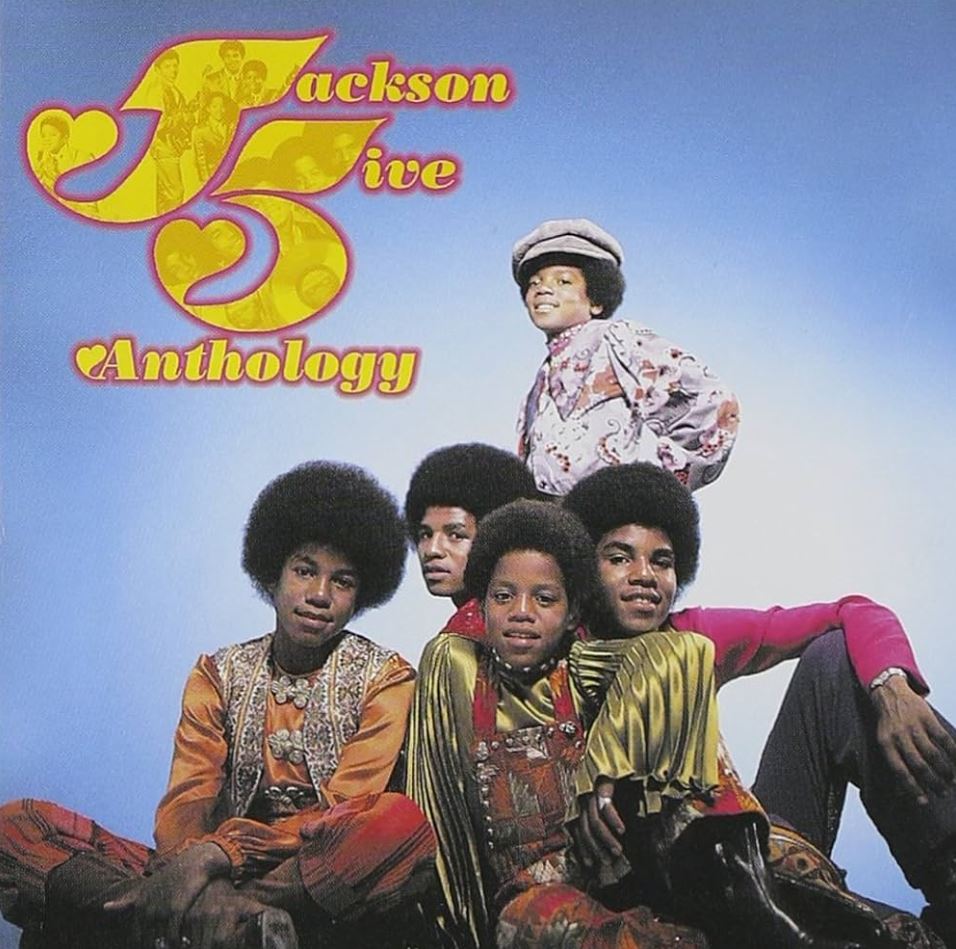
Live at the Forum (2010): This posthumous release featured live performances from their early years, showcasing the raw energy and talent of the young Jackson 5.
The Jacksons Live! (1981): Recorded during their Triumph Tour, this album reached number 30 in the US and was certified Gold, highlighting their prowess as a premier live act.
These albums collectively showcase the evolution of The Jackson 5 and The Jacksons, from their early Motown days to their later success under Epic Records, capturing both their studio precision and live performance energy.
| Live Album | Release Year | US Chart Position | Details |
|---|---|---|---|
| The Jackson 5 in Japan | 1973 | Not charted in the US | A vibrant live performance in Osaka; Japan-only release. |
| Live at the Forum | 2010 | Not charted | Features live performances from the early years, showcasing the young Jackson 5’s raw energy and talent. |
| The Jacksons Live! | 1981 | #30 | Recorded during their Triumph Tour, certified Gold, highlights their prowess as a premier live act. |
Selected Compilation Albums
The Jackson 5 and The Jacksons’ influence on pop music is further exemplified through their compilation albums, which span across their career, capturing the essence of their musical evolution and showcasing their biggest hits.
Greatest Hits (1971): This early compilation includes seminal tracks like “I Want You Back” and “ABC,” peaking at number 12 in the US and solidifying their reputation as pop icons.
Anthology (1976): Released by Motown, this extensive collection spans the early hits of The Jackson 5, reaching number 84 in the US charts, offering a comprehensive look at their initial impact.
Joyful Jukebox Music (1976) & Boogie (1979): These albums were less prominent in charts but served to collect lesser-known tracks and B-sides, providing a deeper exploration of their catalog for dedicated fans.
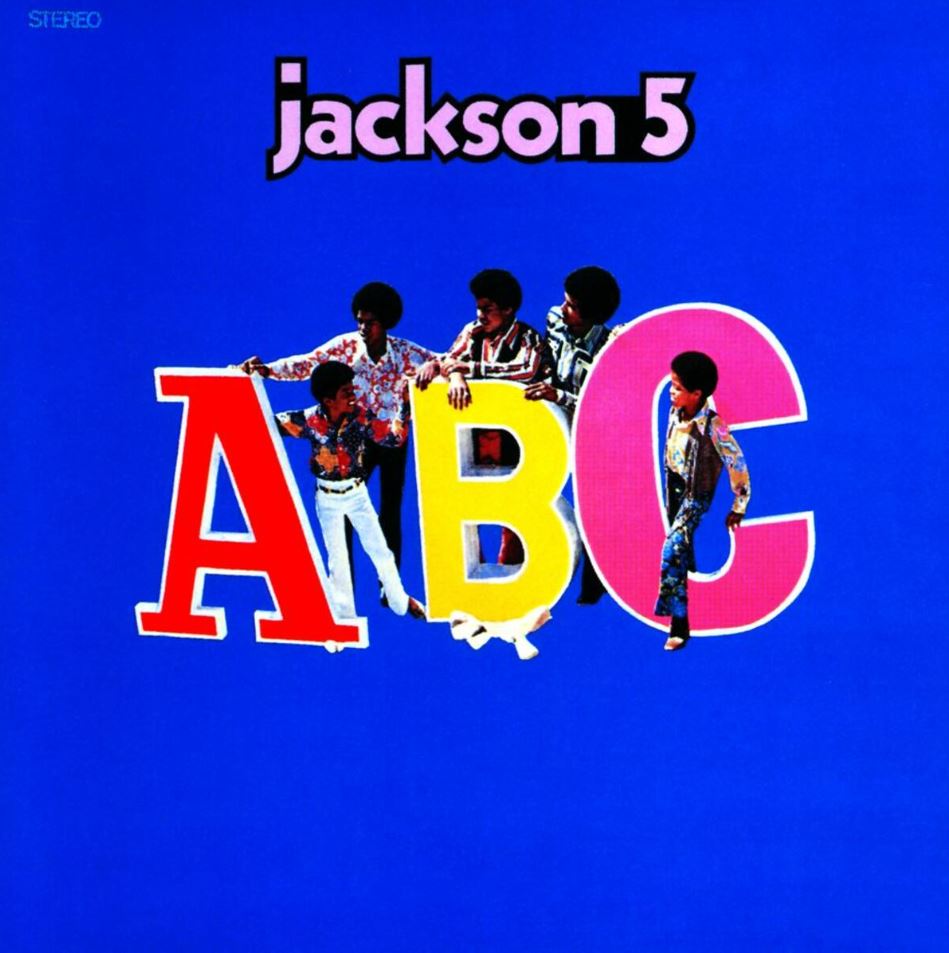
18 Greatest Hits (1983): Notably popular in the UK where it reached number 1, this compilation includes key singles from both The Jackson 5 and Michael’s early solo career.
Children of the Light (1993) & Soulsation! (1995): Released in the ’90s, these compilations did not chart but are notable for their inclusion of rare and unreleased tracks, enriching the narrative of the band’s history.
Jackson 5: The Ultimate Collection (1995) & The Very Best of Michael Jackson with The Jackson Five (1995): These collections highlight the best of The Jackson 5 alongside Michael’s standout performances, with the latter achieving significant sales in the UK.
The Best of Michael Jackson and The Jackson 5ive – The Motown Years (1997): This UK-centric compilation was particularly successful, providing a definitive collection of their most impactful songs.
20th Century Masters – The Millennium Collection: The Best of The Jackson 5 (1999): Reached 114 in the US and has sold over a million copies, making it one of the best-selling compilations, emphasizing the group’s lasting appeal.
Gold (2005) & The Motown Years (2008): These albums compile hits and fan favorites, with “The Motown Years” being particularly comprehensive, charting well across Europe and Australia.
I Want You Back! Unreleased Masters (2009) & J Is for Jackson 5 (2010): Focusing on previously unreleased tracks and children-themed songs, these compilations offer unique insights into the group’s extensive archive.
Come and Get It: The Rare Pearls (2012): This collection features lesser-known and unreleased tracks, showcasing the depth of the Jackson 5’s recordings that didn’t make it onto their studio albums.
The Essential Jacksons (2004), The Very Best of The Jacksons (2004), The Jacksons Story (2004), and Can You Feel It – The Jacksons Collection (2009): Spanning the later era of The Jacksons, these compilations focus on their time with Epic Records, featuring hits that defined their evolution into a more mature sound.
| Compilation Album | Release Year | US Chart Position | Notable Features |
|---|---|---|---|
| Greatest Hits | 1971 | #12 | Includes seminal tracks like “I Want You Back” and “ABC”. |
| Anthology | 1976 | #84 | Extensive collection of early hits. |
| Joyful Jukebox Music & Boogie | 1976 & 1979 | Not charted | Lesser-known tracks and B-sides. |
| 18 Greatest Hits | 1983 | Not charted in US (Popular in UK) | Key singles from The Jackson 5 and Michael’s early solo career. |
| Children of the Light & Soulsation! | 1993 & 1995 | Not charted | Includes rare and unreleased tracks. |
| The Ultimate Collection & The Very Best of Michael Jackson with The Jackson Five | 1995 | Not charted | Highlights the best of The Jackson 5 alongside Michael’s standout performances. |
| The Best of Michael Jackson and The Jackson 5ive – The Motown Years | 1997 | Not charted in US (Popular in UK) | Definitive collection of their most impactful songs. |
| 20th Century Masters – The Millennium Collection: The Best of The Jackson 5 | 1999 | #114 | Sold over a million copies, emphasizing the group’s lasting appeal. |
| Gold & The Motown Years | 2005 & 2008 | Not charted in US (The Motown Years charted in Europe and Australia) | Compiles hits and fan favorites. |
| I Want You Back! Unreleased Masters & J Is for Jackson 5 | 2009 & 2010 | Not charted | Focusing on unreleased tracks and children-themed songs. |
| Come and Get It: The Rare Pearls | 2012 | Not charted | Features lesser-known and unreleased tracks. |
| The Essential Jacksons, The Very Best of The Jacksons, The Jacksons Story, Can You Feel It – The Jacksons Collection | 2004 & 2009 | Not charted | Spanning their later era with Epic Records, focusing on mature sound and hits. |
Soundtrack Albums
The Jacksons also contributed to film and television, which was showcased through their soundtrack albums.
Goin’ Back to Indiana (1971): Released to coincide with their ABC TV special of the same name, this album features live performances and studio tracks, reaching number 16 in the US charts. It captures the vibrancy of their early career.
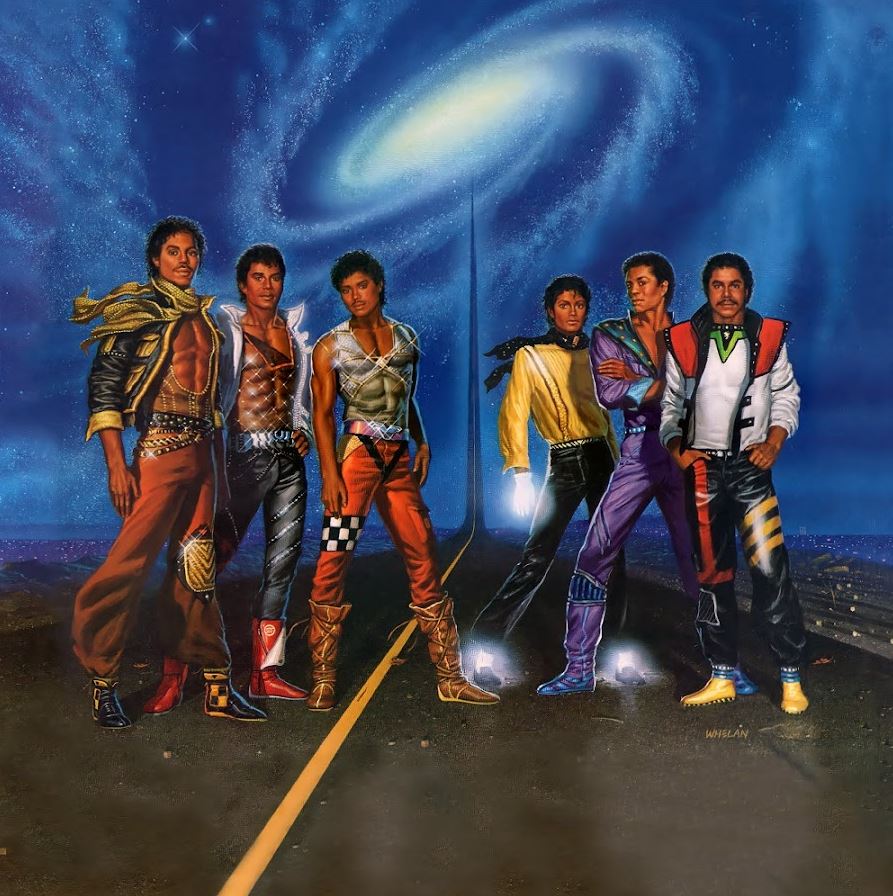
The Jacksons: An American Dream (1992): Accompanying the miniseries that dramatized their rise to fame, this soundtrack includes both Jackson 5 classics and Michael’s solo tracks, charting modestly and serving as a nostalgic reminder of their storied career.
These compilation and soundtrack albums not only celebrate the significant milestones of The Jackson 5 and The Jacksons but also provide fans and new listeners alike with a curated experience of their musical journey, reflecting their broad appeal and enduring legacy in the world of music.
| Soundtrack Album | Release Year | US Chart Position | Details |
|---|---|---|---|
| Goin’ Back to Indiana | 1971 | #16 | Released to coincide with their ABC TV special; features live performances and studio tracks. |
| The Jacksons: An American Dream | 1992 | Modest charting | Accompanies the miniseries about their rise to fame; includes Jackson 5 classics and Michael’s solo tracks. |
Singles
The Jackson 5’s array of singles showcases a journey through various music styles, marked by significant chart success and widespread acclaim.
Big Boy (1968): Their debut single, though not a chart-topper, marked the commercial beginning of The Jackson 5.
We Don’t Have to Be Over 21 (To Fall in Love) (1968): An early single that showcased their raw talent before they achieved major success.
I Want You Back (1969): A breakthrough for the group, reaching No. 1 on the Billboard Hot 100, and later certified Platinum, solidifying their place in pop culture.
ABC (1970): Another No. 1 hit, continuing their streak of infectious pop hits that appealed to a broad audience.
The Love You Save (1970): Concluded their remarkable run of four consecutive No. 1 singles on the Billboard Hot 100.
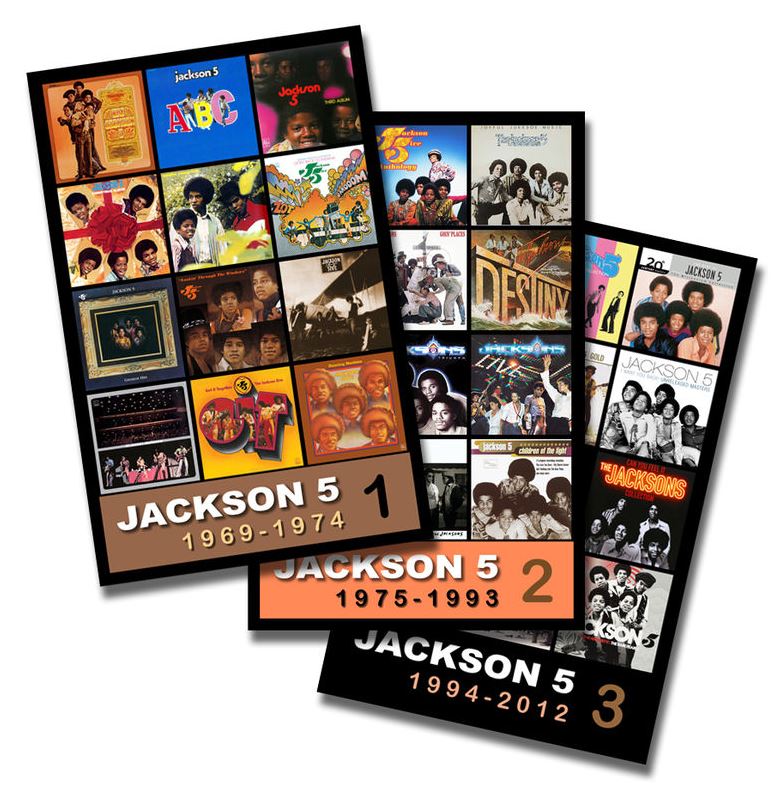
I’ll Be There (1970): A ballad that showed their versatility, also reaching No. 1 and becoming one of the best-selling singles of the year.
Santa Claus Is Comin’ to Town (1970): A festive single that remains a holiday staple, showcasing their ability to cover different genres.
I Saw Mommy Kissing Santa Claus (1970): Another popular Christmas track, enduring as a seasonal favorite.
Mama’s Pearl (1971), Never Can Say Goodbye (1971), and Maybe Tomorrow (1971): Top 20 hits that underscored their consistent chart performance.
Sugar Daddy (1971), Little Bitty Pretty One (1972), and Lookin’ Through the Windows (1972): Continued their streak of catchy, soul-infused pop songs.
Doctor, My Eyes (1972), Corner of the Sky (1972), Hallelujah Day (1973), and Skywriter (1973): Showcased their growth and experimentation with sound.
Get It Together (1973), Dancing Machine (1974), The Boogie Man (1974), and Whatever You Got, I Want (1974): Solid entries into funk and dance, with “Dancing Machine” becoming particularly popular.
I Am Love (1974), Forever Came Today (1975), and All I Do Is Think of You (1975): Wrapped up their tenure with Motown with these soulful and reflective tracks.
With a new label and renewed energy, The Jacksons continued to release influential singles.
Enjoy Yourself (1976) and Show You the Way to Go (1977): Uplifting tracks that marked a successful transition to Epic Records.
Dreamer (1977) and Goin’ Places (1977): Kept their optimistic and energetic style alive.
Find Me a Girl (1977), Even Though You’re Gone (1978), and Music’s Takin’ Over (1978): Deep cuts that showcased their evolving musical style.
Blame It on the Boogie (1978) and Shake Your Body (Down to the Ground) (1979): Dance floor anthems that became global hits.
Destiny (1978), Lovely One (1980), Heartbreak Hotel (1980), and Can You Feel It (1981): Showcased a mature sound that was both refined and powerful.
Walk Right Now (1981), Time Waits for No One (1981), and Things I Do for You (Live) (1981): Illustrated their prowess as a live act and their ability to connect with audiences.
Working Day and Night (Live) (1981), State of Shock (with Mick Jagger) (1984), Torture (1984), Body (1984), and Wait (1985): Highlighted their versatility and continued relevance in the evolving music scene.
Time Out for the Burglar (1987), Nothin’ (That Compares 2 U) (1989), 2300 Jackson Street (1989), Art of Madness (1989), and Who’s Lovin’ You (1993): Their later years saw varied success, with a mix of nostalgic returns and new ventures.
Letter in the Sky (Ai featuring The Jacksons) (2011): A notable collaboration that bridged cultural and generational gaps, highlighting their enduring influence and adaptability in the music industry.
| Single | Release Year | Chart Success | Remarks |
|---|---|---|---|
| Big Boy | 1968 | Not a chart-topper | Debut single, marked the commercial beginning. |
| I Want You Back | 1969 | No. 1 on Billboard Hot 100 | Breakthrough single, certified Platinum. |
| ABC | 1970 | No. 1 on Billboard Hot 100 | Continued their streak of infectious pop hits. |
| The Love You Save | 1970 | No. 1 on Billboard Hot 100 | Part of their remarkable run of four consecutive No. 1 singles. |
| I’ll Be There | 1970 | No. 1 on Billboard Hot 100 | A ballad showing their versatility, one of the best-selling singles of the year. |
| Dancing Machine | 1974 | Popular on dance charts | Transitioned into funk and dance, a major hit. |
| Enjoy Yourself | 1976 | Uplifting track post-label change | Marked a successful transition to Epic Records. |
| Blame It on the Boogie | 1978 | Global dance floor anthem | One of the highlights of their career under Epic Records. |
| Shake Your Body (Down to the Ground) | 1979 | Global dance floor anthem | Further cemented their reputation as influencers in the dance music scene. |
| State of Shock (with Mick Jagger) | 1984 | Highlighted their versatility | A collaboration that brought together rock and pop elements. |
| Letter in the Sky (Ai featuring The Jacksons) | 2011 | Cultural bridge | A notable collaboration that bridged cultural and generational gaps. |
Home Video
The Jackson 5 and The Jacksons also ventured into visual media, releasing several notable home videos that captured their dynamic performances and charismatic stage presence.
In Concert (1981): Featured live performances that displayed their incredible live energy and cohesive performances.
The Jackson 5ive (2013): A collection of episodes from their animated TV show, offering a nostalgic look at their cultural impact during their peak.
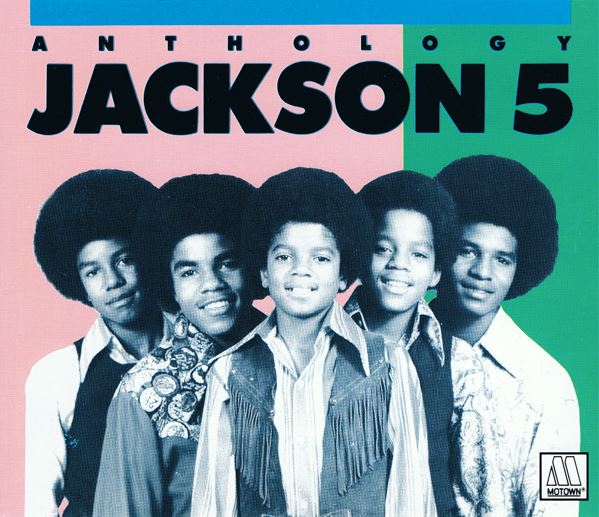
Live (1979): Showcased a live concert at Finsbury Park Astoria, London, capturing the essence of their live appeal during the Destiny World Tour.
The Complete TV Show (Europe) (2011): Included all episodes of “The Jacksons” TV variety show, highlighting their versatility and charm beyond music.
These releases not only enriched their musical legacy but also allowed fans to experience the excitement and energy of their live shows and special television appearances.
| Home Video Title | Release Year | Content Description |
|---|---|---|
| In Concert | 1981 | Features dynamic live performances, showcasing their incredible live energy. |
| The Jackson 5ive | 2013 | A collection of episodes from their animated TV show, reflecting their cultural impact during their peak. |
| Live | 1979 | Features a live concert at Finsbury Park Astoria, London, capturing their live appeal during the Destiny World Tour. |
| The Complete TV Show (Europe) | 2011 | Includes all episodes of “The Jacksons” TV variety show, showcasing their versatility and charm beyond music. |
Music Videos
The Jacksons’ contribution to the evolution of music videos marked a significant chapter in their storied career, combining their musical prowess with compelling visual storytelling. Their videos not only enhanced the songs’ appeal but also cemented their status as pioneers in the visual aspects of music production.
Enjoy Yourself (1976): The music video captures the band’s joyous expressions and dance moves, emphasizing the song’s uplifting message and the group’s charismatic performance style.
Goin’ Places (1977): This video features the band on various adventures, complementing the song’s themes of escape and exploration with vibrant visuals.
Even Though You’re Gone (1978): The video portrays a more introspective and emotional tone, reflecting the song’s melancholic lyrics through its subdued and poignant imagery.
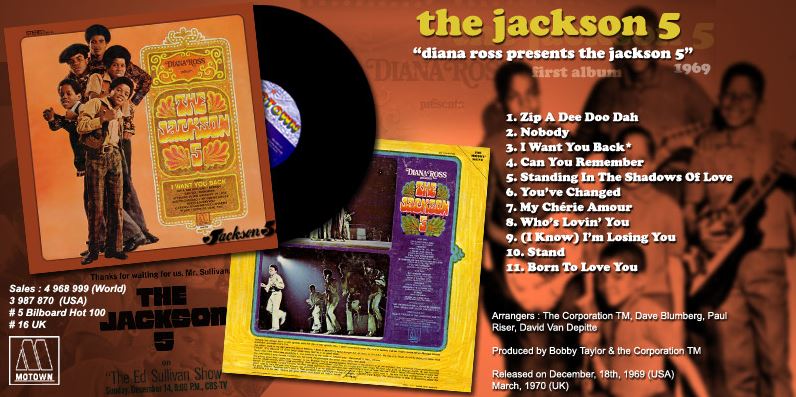
Blame It on the Boogie (1978): A dynamic and energetic video that matches the disco vibe of the era, filled with dance sequences that highlight the group’s choreographic skills.
Can You Feel It (1981): Known for its groundbreaking effects and cinematic quality, this video was a landmark in music video production, depicting the band as larger-than-life figures bringing joy and unity through their music.
Torture (1984): Features surreal and dramatic visuals, reflecting the song’s intense emotional themes. The video is notable for its creative use of effects and narrative storytelling.
Body (1984): This video showcases the band’s performance intertwined with narratives that explore themes of attraction and desire, packed with vibrant visuals and energetic dance sequences.
Nothin’ (That Compares 2 U) (1989): The video features a more modern aesthetic that suits the late 80s pop culture, with a focus on dance and visual effects that highlight the song’s rhythmic beats.
2300 Jackson Street (1989): A deeply personal video that includes home video clips and photos of the Jackson family, offering a nostalgic look at the band’s journey and their strong family bonds.
Art of Madness (1989): A visually engaging video that combines elements of surrealism and abstract art to match the song’s eclectic style.
Letter in the Sky (Ai featuring The Jacksons) (2011): This collaboration features a blend of cultural visuals, highlighting the global influence of The Jacksons while integrating Ai’s contemporary style.
I Saw Mommy Kissing Santa Claus (Animated video, 2019): A charming animated video that brings a fresh visual interpretation to this classic Christmas song, appealing to a new generation of viewers.
Can You Feel It (Kirk Franklin Remix) (2021): This remix video injects a contemporary gospel twist, accompanied by vibrant visuals that resonate with both old and new audiences.
Can You Feel It (Jacksons x MLK Remix) (2021): This video blends the powerful legacy of Martin Luther King Jr. with the song, using historical footage to create a poignant message of hope and unity.
| Music Video | Release Year | Visual Themes | Notable Features |
|---|---|---|---|
| Enjoy Yourself | 1976 | Joyous, uplifting | Captures the band’s charismatic performance and dance moves. |
| Goin’ Places | 1977 | Adventure, vibrant | Complements the song’s themes of escape and exploration. |
| Even Though You’re Gone | 1978 | Introspective, emotional | Portrays a melancholic tone, matching the song’s lyrics. |
| Blame It on the Boogie | 1978 | Energetic, disco-era | Dynamic dance sequences that match the disco vibe. |
| Can You Feel It | 1981 | Cinematic, groundbreaking effects | Landmark in music video production with larger-than-life imagery. |
| Torture | 1984 | Surreal, dramatic | Creative use of effects and narrative storytelling. |
| Body | 1984 | Vibrant, energetic | Explores themes of attraction and desire through performance and narrative. |
| Nothin’ (That Compares 2 U) | 1989 | Modern, rhythmic | Modern aesthetic with a focus on dance and visual effects. |
| 2300 Jackson Street | 1989 | Nostalgic, personal | Includes home video clips and photos, highlighting family bonds. |
| Art of Madness | 1989 | Surreal, abstract art | Combines elements of surrealism to match the song’s eclectic style. |
| Letter in the Sky (Ai featuring The Jacksons) | 2011 | Cultural, collaborative | Blends cultural visuals, integrating Ai’s contemporary style. |
| I Saw Mommy Kissing Santa Claus (Animated video) | 2019 | Animated, charming | Brings a fresh visual interpretation to this classic Christmas song. |
| Can You Feel It (Kirk Franklin Remix) | 2021 | Vibrant, gospel twist | Injects a contemporary gospel twist, resonating with diverse audiences. |
| Can You Feel It (Jacksons x MLK Remix) | 2021 | Historical, hopeful | Blends historical footage of MLK to create a message of hope and unity. |
The Jackson 5’s impact on the music industry extends beyond their harmonious melodies and innovative sounds; they transformed the way music was experienced visually through their pioneering music videos. Their legacy in the music video domain helped set the stage for future artists to use this medium as a critical component of artistic expression and commercial success.
The ongoing influence of their music and visual artistry continues to resonate across generations, underscoring the timeless appeal of their work. The Jacksons not only provided a soundtrack for their era but also created a visual legacy that continues to inspire and entertain audiences around the world. Through their innovative approach to music and media, The Jackson 5 and The Jacksons have left an indelible mark on both the sound and sight of pop culture.
